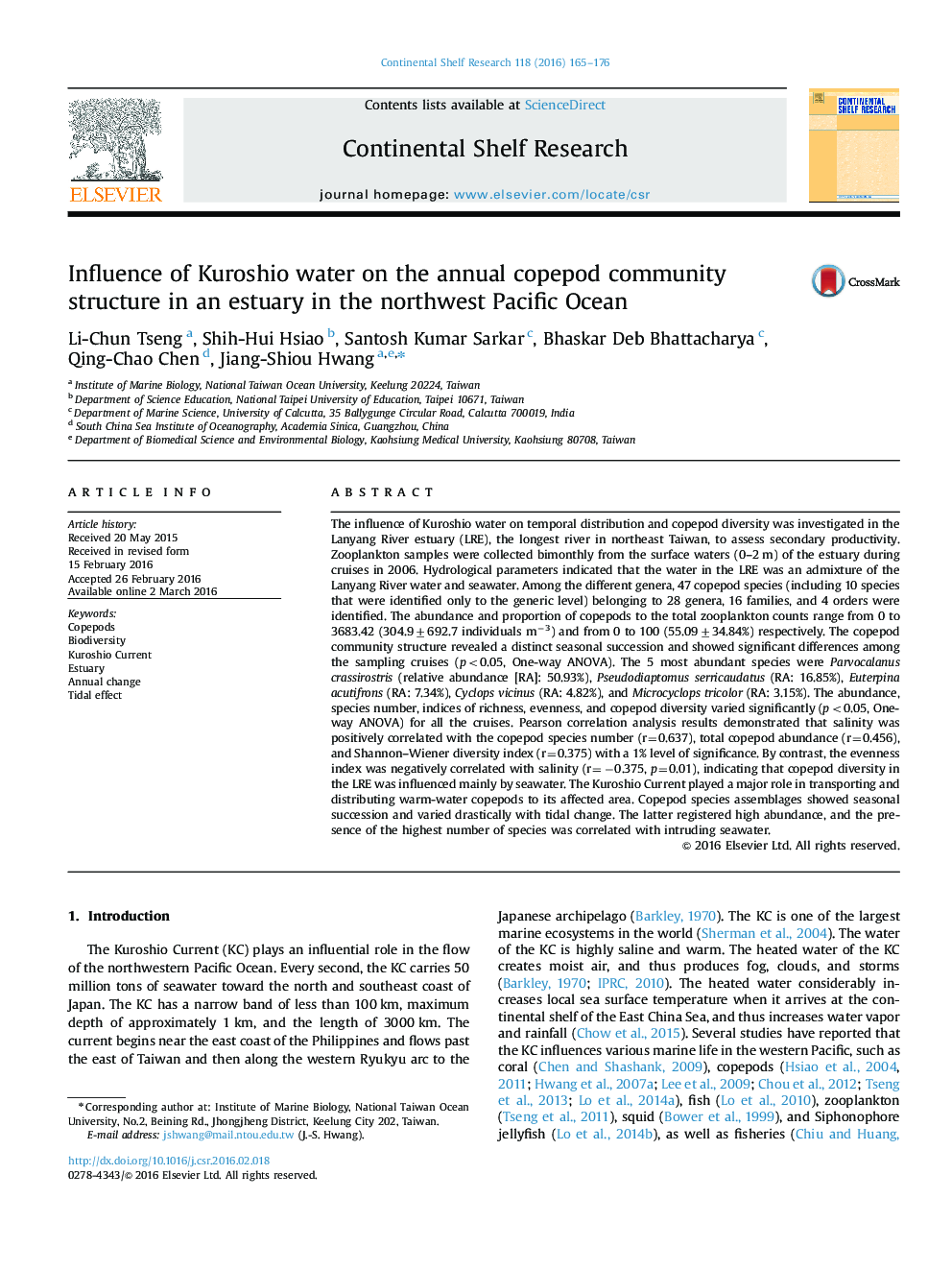| کد مقاله | کد نشریه | سال انتشار | مقاله انگلیسی | نسخه تمام متن |
|---|---|---|---|---|
| 4531600 | 1626095 | 2016 | 12 صفحه PDF | دانلود رایگان |
• To evaluate the influence of Kuroshio, tidal effects, and interplay waters on the copepod community at estuary.
• Intruded Kuroahio water bringing warm and euryhaline copepod species into estuary.
• The critical role of river water and seawater in shaping the copepod community structure.
• Clear patterns of seasonal succession of the copepod community exhibition
• The important role of Kuroshio water in transporting and distributing warm water copepods to its affected area.
The influence of Kuroshio water on temporal distribution and copepod diversity was investigated in the Lanyang River estuary (LRE), the longest river in northeast Taiwan, to assess secondary productivity. Zooplankton samples were collected bimonthly from the surface waters (0–2 m) of the estuary during cruises in 2006. Hydrological parameters indicated that the water in the LRE was an admixture of the Lanyang River water and seawater. Among the different genera, 47 copepod species (including 10 species that were identified only to the generic level) belonging to 28 genera, 16 families, and 4 orders were identified. The abundance and proportion of copepods to the total zooplankton counts range from 0 to 3683.42 (304.9±692.7 individuals m−3) and from 0 to 100 (55.09±34.84%) respectively. The copepod community structure revealed a distinct seasonal succession and showed significant differences among the sampling cruises (p<0.05, One-way ANOVA). The 5 most abundant species were Parvocalanus crassirostris (relative abundance [RA]: 50.93%), Pseudodiaptomus serricaudatus (RA: 16.85%), Euterpina acutifrons (RA: 7.34%), Cyclops vicinus (RA: 4.82%), and Microcyclops tricolor (RA: 3.15%). The abundance, species number, indices of richness, evenness, and copepod diversity varied significantly (p<0.05, One-way ANOVA) for all the cruises. Pearson correlation analysis results demonstrated that salinity was positively correlated with the copepod species number (r=0.637), total copepod abundance (r=0.456), and Shannon–Wiener diversity index (r=0.375) with a 1% level of significance. By contrast, the evenness index was negatively correlated with salinity (r=−0.375, p=0.01), indicating that copepod diversity in the LRE was influenced mainly by seawater. The Kuroshio Current played a major role in transporting and distributing warm-water copepods to its affected area. Copepod species assemblages showed seasonal succession and varied drastically with tidal change. The latter registered high abundance, and the presence of the highest number of species was correlated with intruding seawater.
Journal: Continental Shelf Research - Volume 118, 15 April 2016, Pages 165–176
